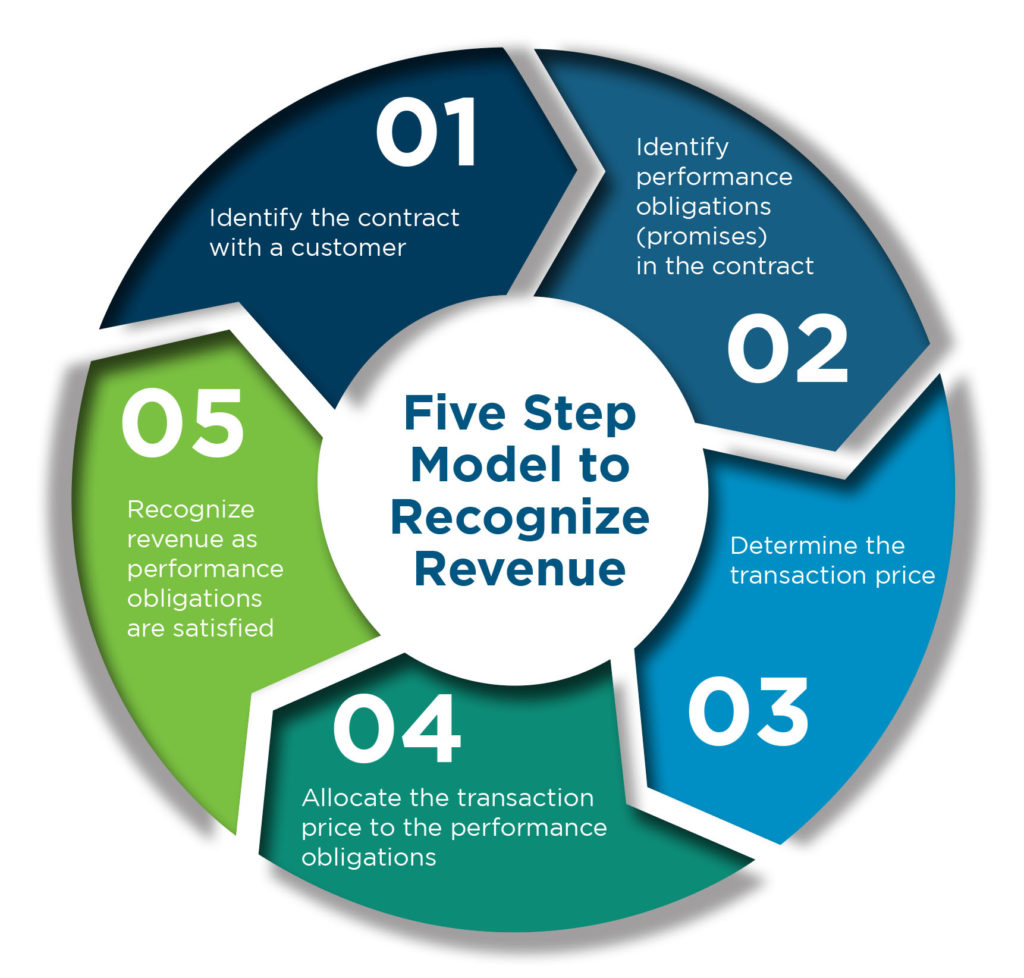Article written by:
Bob Biehl, CPA, CCIFP
Assurance Director
The new standard developed a five-step model for recognizing revenue that will now be applied throughout GAAP, replacing multiple different criteria, thus achieving one of the goals of the new standard: consistency. The only exceptions are contracts that are considered a lease, an insurance contract, a nonmonetary exchanges, a guarantees or those involving financial instruments.
The second step is to determine the performance obligations in each contract. A performance obligation is a promise to deliver a good or provide a service (or a series of distinct goods or services that are substantially the same and that have the same pattern of transfer to the customer). It can be implicit or explicit.
Depending on the contract, promised goods or services may include, but are not limited to, the following:
- Sale of goods produced by an entity (for example, inventory of a manufacturer)
- Resale of goods purchased by an entity (for example, merchandise of a retailer)
- Resale of rights to goods or services purchased by an entity (for example, a ticket resold by an entity acting as a principal)
- Performing a contractually agreed-upon task (or tasks) for a customer
- Providing a service of standing ready to provide goods or services (for example, unspecified updates to software that are provided on a when-and-if-available basis) or of making goods or services available for a customer to use as and when the customer decides
- Providing a service of arranging for another party to transfer goods or services to a customer (for example, acting as an agent of another party)
- Granting rights to goods or services to be provided in the future that a customer can resell or provide to its customer (for example, an entity selling a product to a retailer promises to transfer an additional good or service to an individual who purchases the product from the retailer)
- Constructing, manufacturing, or developing an asset on behalf of a customer
- Granting options to purchase additional goods or services
In order to identify performance obligations in each contract, a company needs to determine whether or not the goods or services are distinct. If distinct, a customer can benefit from the good or service on its own (the good or service is separable from the other goods or services in a contract). A good or service is distinct if:
- The customer can benefit from the good or service either on its own or together with other resources that are readily available to the customer (that is, the good or service is capable of being distinct).
- The entity’s promise to transfer the good or service to the customer is separately identifiable from other promises in the contract (that is, the promise to transfer the good or service is distinct within the context of the contract).
Example:
An auto dealer sells a car to a customer for an all-inclusive price that includes the car and three years of free oil changes. This contract would include two performance obligations. The first performance obligation would be for the sale of the car. The second performance obligation would be for the oil changes. The car performance obligation revenue would be recognized upon delivery to the customer. The oil change performance obligation would be recognized over the three-year oil change obligation.
Determining the distinct nature of goods and services will require judgment. ASC 606-10-25-21 provides a list of factors for a company to consider when determining whether there are separate, distinct goods or services in each contract. The company will need to evaluate each contract to determine whether there is more than one performance obligation.
